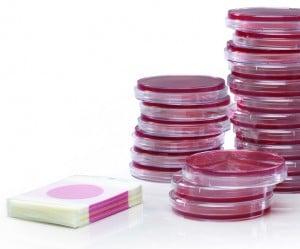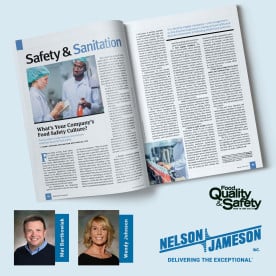“You could also ask who’s in charge. Lots of people think, well, we’re humans; we’re the most intelligent and accomplished species; we’re in charge. Bacteria may have a different outlook: more bacteria live and work in one linear centimeter of your lower colon than all the humans who have ever lived. That’s what’s going on in your digestive tract right now. Are we in charge, or are we simply hosts for bacteria? It all depends on your outlook.” - Neil deGrasse Tyson, Space Chronicles: Facing the Ultimate Frontier.
As funny as that may sound and as puzzling as it may be to think about, it is true. Bacteria are everywhere; most of them are good and normal and are absolutely necessary for the maintenance of our health, environment, and well-being. They are responsible for some of the best things (in my book) in life…like cheese, beer, and wine. But when the wrong bacteria get into our food supply, the results can be disastrous.
Historically, testing for the presence of what is known as an indicator organism in our water and food supply, has played a significant role in the food industry. These levels are monitored as indicators of food quality, food safety, and a marker of the overall hygienic status of the production facility. E.coli, Coliforms, and Enterobacteriaceae are three indicators that have been, and are currently used in the industry.
In 1887 a well-known bacteriologist, Theodor Escherich, observed a pervasiveness of organisms now known as Esherichia in human stools. Later, E.coli and other organisms were used to indicate the potential presence of pathogens in water. In 1915, the U.S. Public Health service changed this standard indicator from E.coli to Coliforms. Using E.coli and Coliforms as indicators of water safety and quality eventually spread to testing for these organisms in other foods. First, pasteurized milk and dairy products were tested and then an array of other foods followed.
During the 1970’s, there was an attempt to differentiate between the use of E.coli and Coliforms, in addition to a new focus of interest: Enterobacteriaceae. The Enterobacteriaceae group encompasses all Coliforms, Salmonella, E.coli, and other bacteria in the family Enterobacteriaceae. Hence, it essentially casts a wider net, encompassing both of the previous choice indicators used to detect potential pathogens. Common foodborne genera of the family include, Citrobacter, Enterobacter, Erwinia, Esherichia, Klebsiella, Proteus, Salmonella, Serratia, Shigella, and Yersinia. Enterobacteriaceae testing casts a wider net over these genera and, in addition, Enterobacteriaceae also have greater resistance to the environment than Coliforms, which also differentiates Enterobacteriaceae from Coliforms as an indicator of sanitation.
With all that being said, the presence of Enterobacteriaceae in your facility can not confirm the presence of these pathogens specifically, but it provides a safety net if they are there. For example, a colony found when testing for Enterobacteriaceae does not confirm the presence of pathogens such as Salmonella, this only indicates that it could be Salmonella or any other organism in the Enterobacteriaceae family. Overall, they serve as an assessment of the overall quality of food and indicate the status of sanitation in the environment.
According to the National Life Sciences Institute- Europe, “Historically, coliforms were the most common indicator group tested for by the food industry, especially within the dairy sector. In some countries, depending on regulatory requirements, the food industry has moved towards testing for Enterobacteriaceae.” Enterobacteriaceae testing has been and is currently used a lot more in Europe, but as the guidelines and requirements for food safety assurance programs are becoming more stringent, using methods to detect Enterobacteriaceae in the United States are certainly on the rise. When it comes down to it, most quality assurance programs want to be using the best methods in order to prevent any potential pathogens from reaching their products. With all of this in mind, it might be worth it to ask: Are you bringing the right plate to the table?
For more information on 3M Petrifilm Enterobacteriaceae, please click here or contact me, Jess Goessl via email at [email protected] or call 1-800-826-8302.






